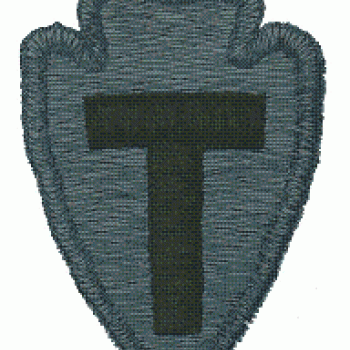Dahlquist, John E.
- Minneapolis, Minnesota, United States
Military Information:
- US Army
- Bronze Star Medal
- Silver Star
- WWI Veteran
- Deceased
- WWII Veteran
- Cold War
- Legion of Merit
- QR Code
- WWII Victory Medal
- Victory Medal (WW I)
- National Cemetery - Arlington
- Major General (2 Star)
- 1-Alpha List
- National/American Defense Service Medal/Award
- Army Distinguished Service Cross
- T-Patcher
Bio:
Dahlquist commanded three different army divisions, commanded at the corps and field army level and rose to the rank of four-star general. He is well-known for commanding the series of poor tactical decisions which led to the 442nd RCT becoming the most highly decorated unit in the history of the United States Armed Forces.
An energetic, but relatively inexperienced, Major General Dahlquist took command of the 36th Infantry Division a month before the 15 August 1944, invasion of Southern France as part of the 6th Army Group in Operation Dragoon. He led the 36th Division 'T-Patchers' (the Division's shoulder patch is an arrow containing a large 'T') through that successful venture and the drive that followed. On 24 October 1944, the 1st and 2nd Battalions of the 141st Infantry moved to secure the right flank of the 3d Infantry Division, near the French town of St. Die. When the German forces counterattacked, 1st Battalion was separated and cut off and it came to be called the 'Lost Battalion.' After two days of attempted rescue by the 2nd and 3rd Battalions, 141st Infantry, Dahlquist resorted to sending in the mostly Japanese-American 100th Battalion, 442nd Regimental Combat Team (100/442d RCT), which had borne the brunt of the Division's fighting for the previous eight days. The 100/442d RCT would suffer 800 casualties, including 121 dead, during the five days it took to rescue the 211 men of the 1st Battalion, 141st Infantry.
After 400 days of combat, five campaigns in Italy, France, Germany and Austria, and two major amphibious operations, the men of the 36th Infantry Division-the Texas Division-could look back with pride on a multitude of victories woven with hardship and heroism. They could point to a record of 175,806 enemy captured, 12 Medals of Honor, 6 Presidential Unit Citations, 12 Distinguished Service Plaques, and a host of other commendations, medals and awards. But they could not forget that their casualty list was the third highest in the ETO: 27,343, of whom 3,974 were killed, 19,052 wounded, and 4,317 missing in action.



